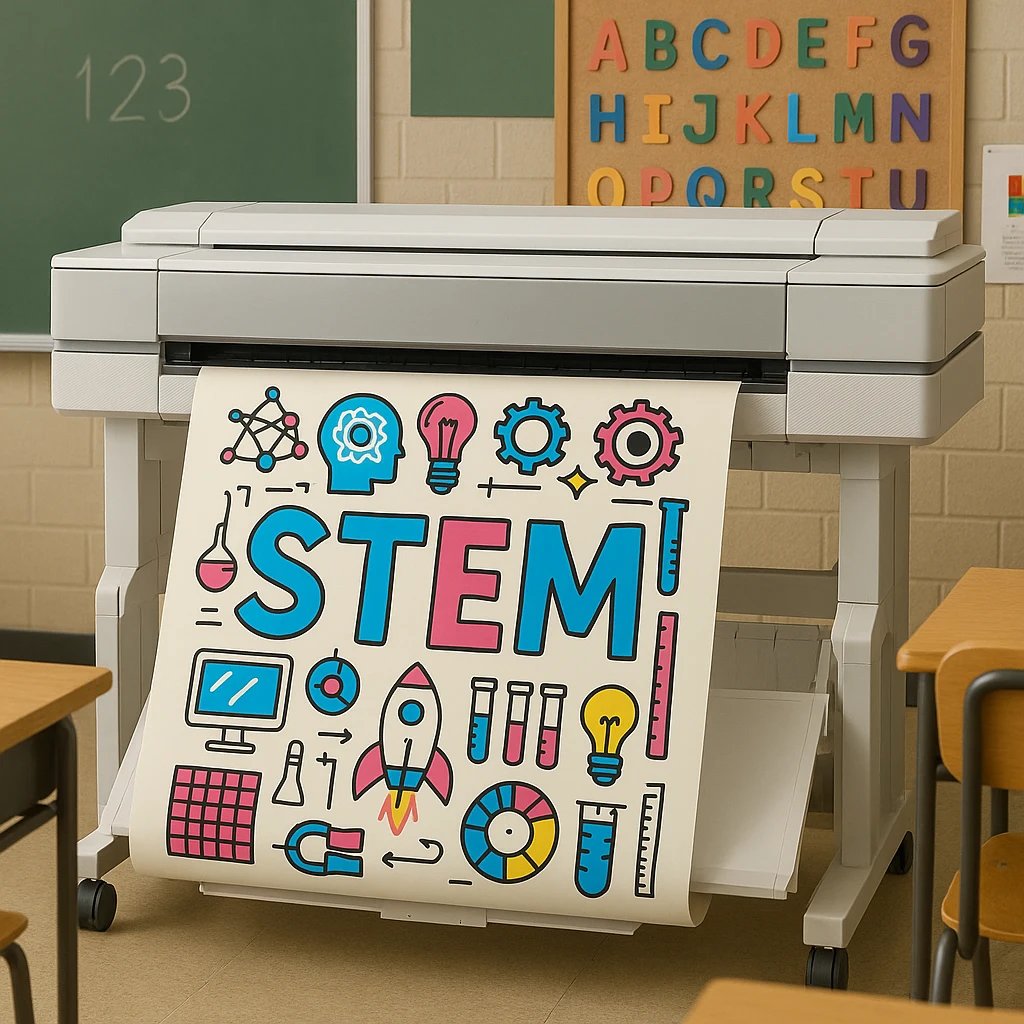Poster Machines Beat Visual Fatigue in Schools
As an educational psychologist, I’ve spent years studying how our brains process visual information in learning environments. The research is fascinating: our brains are wired to pay attention to novelty while filtering out familiar stimuli. This evolutionary adaptation helped our ancestors survive by noticing changes in their environment, but in modern classrooms, it can work against us.
When students first encounter a new poster, their reticular activating system (RAS) – the brain’s attention filter – marks it as important. However, after repeated exposure, typically within 2-3 weeks, that same poster becomes part of the “background noise.” The visual cortex literally stops sending strong signals about its presence, much like how we stop noticing a familiar smell after being in a room for a few minutes.
Reflection moment: Think about your own workspace. What visual elements have you stopped noticing? How might this same process be affecting your students?
Understanding Habituation in Educational Settings
Research from cognitive psychology shows that habituation occurs faster with static visual displays than with dynamic ones. A study published in the Journal of Educational Psychology found that students’ visual attention to classroom posters decreased by 67% after just four weeks of exposure. This isn’t a flaw in student attention – it’s simply how our brains efficiently allocate cognitive resources.

Visual attention patterns change dramatically over time with static displays
Creating Your Rotation Calendar with Poster Machines for Visual Fatigue
A systematic approach to display rotation ensures you’re maximizing visual impact without overwhelming yourself or your students. Here’s a research-backed calendar template I’ve developed through years of working with educators.
Monthly Rotation Framework
Based on attention research and practical classroom experience, here’s a monthly framework that maintains visual freshness while supporting curriculum goals:
Pro Tip: The Classroom Pro 24 Elite Package includes design software perfect for quick poster variations!
Teachers report improved student engagement when following structured rotation schedules
Implementing Sustainable Rotation Systems
Creating a sustainable rotation system requires both planning and the right tools. Let’s explore practical implementation strategies that won’t overwhelm your already busy schedule.
The Psychology of Sustainable Change
As we implement these rotation strategies, it’s crucial to understand the psychological principles that make them effective. Visual fatigue isn’t just about boredom – it’s about cognitive efficiency. Our brains are constantly seeking to conserve energy, and ignoring familiar stimuli is one way they do this.
By creating planned variations using poster machines, we work with our brain’s natural tendencies rather than against them. Each rotation reactivates the orienting response, that automatic attention mechanism that helps us notice and process new information.
Research from the American Psychological Association shows that varied visual environments can improve memory consolidation by up to 40%. This isn’t just about keeping things interesting – it’s about optimizing the learning environment for better educational outcomes.
Personal reflection: In my own practice, I’ve found that teachers who embrace visual rotation report not just better student engagement, but also renewed enthusiasm for their classroom environment. It becomes a creative outlet that benefits everyone.
Your Journey to Visual Wellness
Creating dynamic visual environments isn’t just about student engagement – it’s about nurturing your own creativity and preventing burnout. When you have the tools to easily refresh your classroom visuals, teaching becomes more joyful and sustainable.
Remember, small changes make big differences. Start with one rotation zone, experiment with design variations, and watch as your classroom transforms into a space where both you and your students thrive.
What visual change will you implement first? Share your rotation success stories – I’d love to feature them in future workshops!

